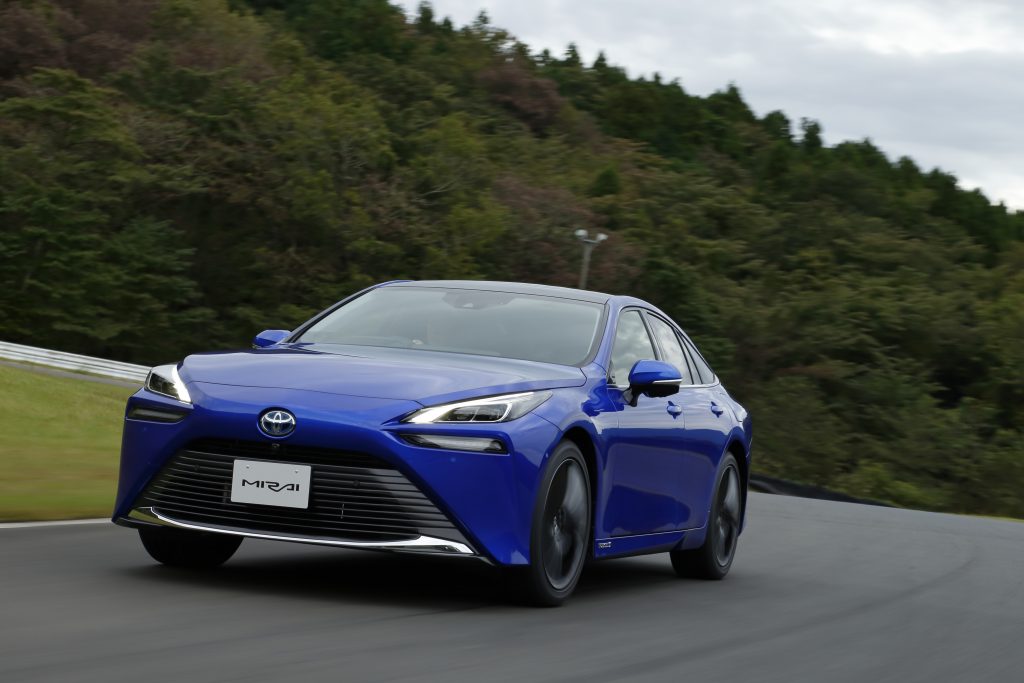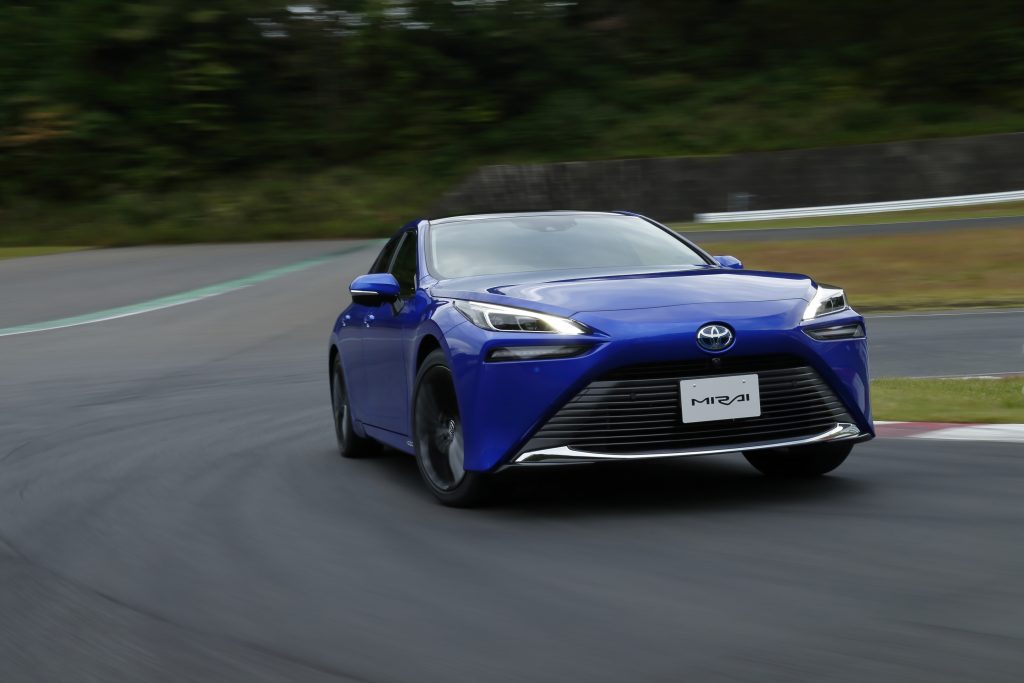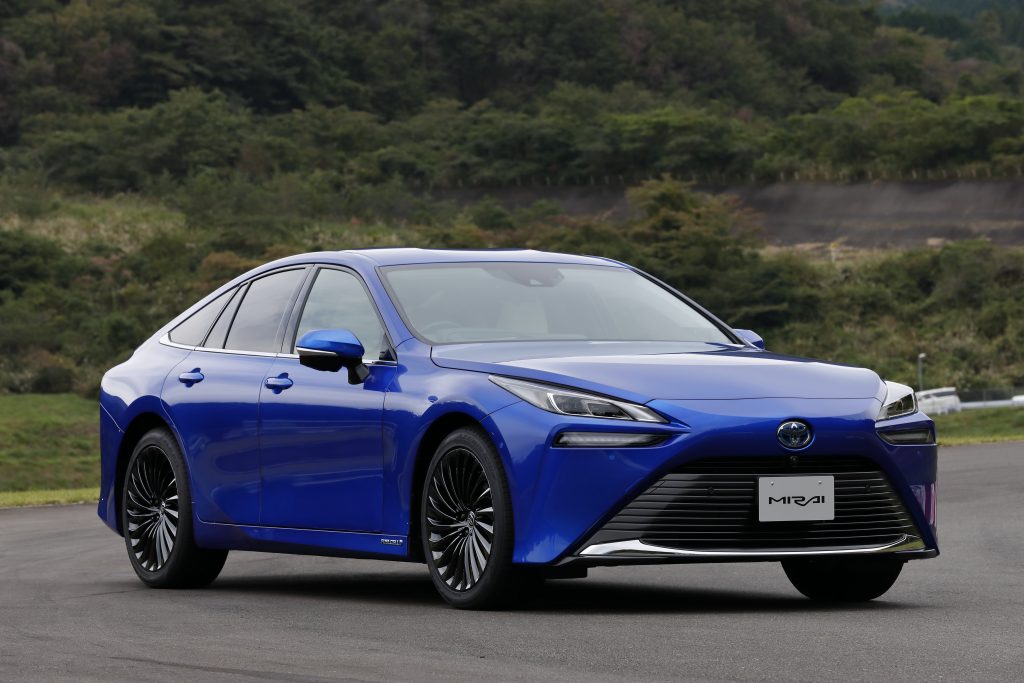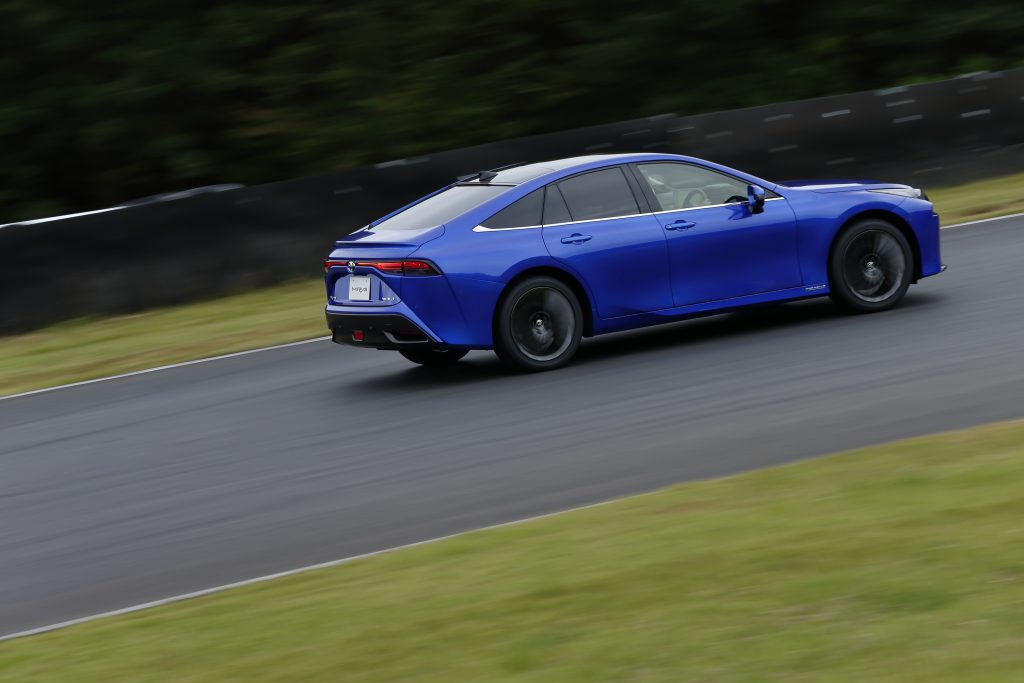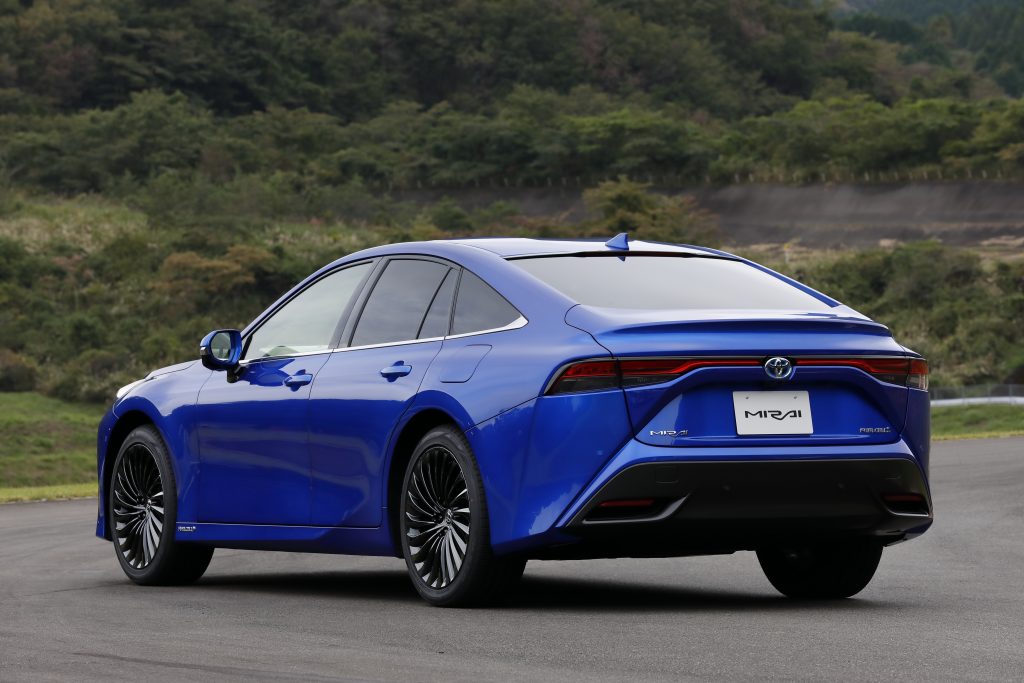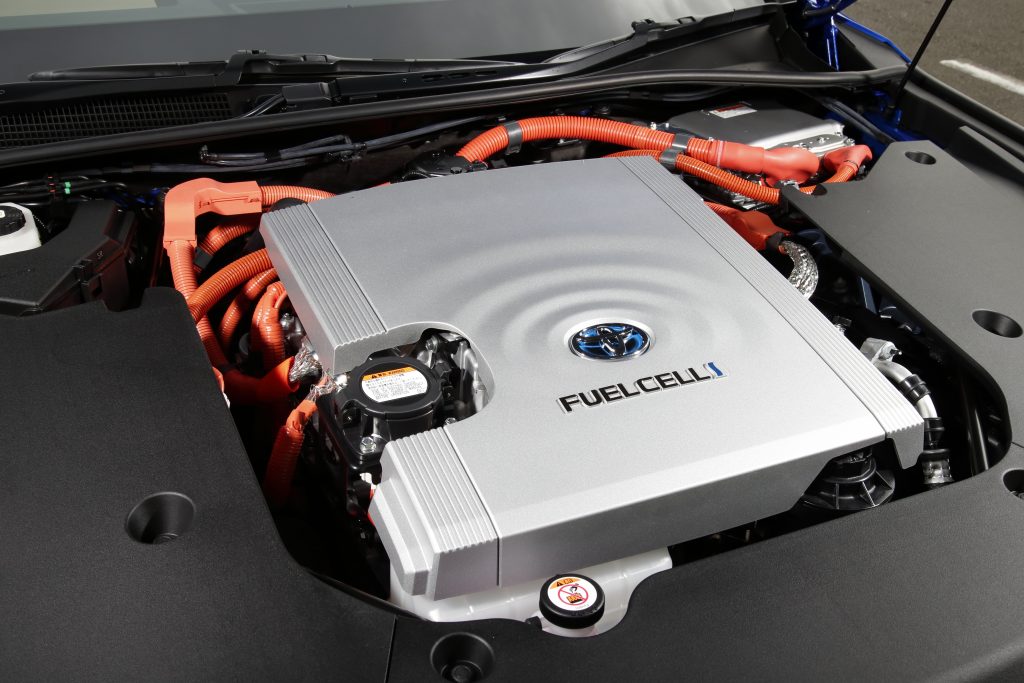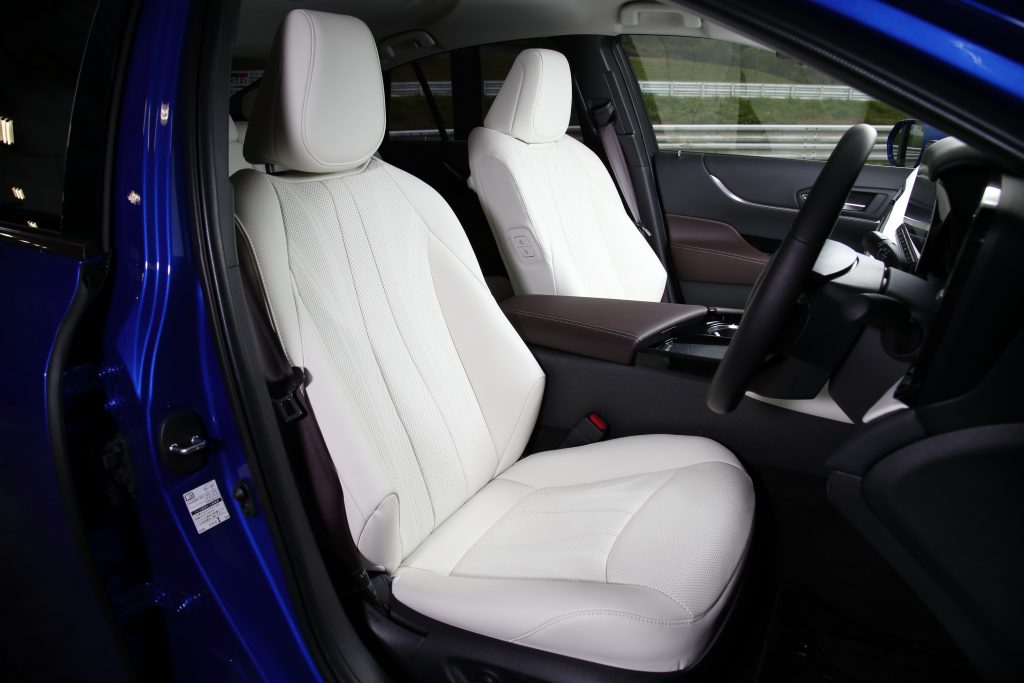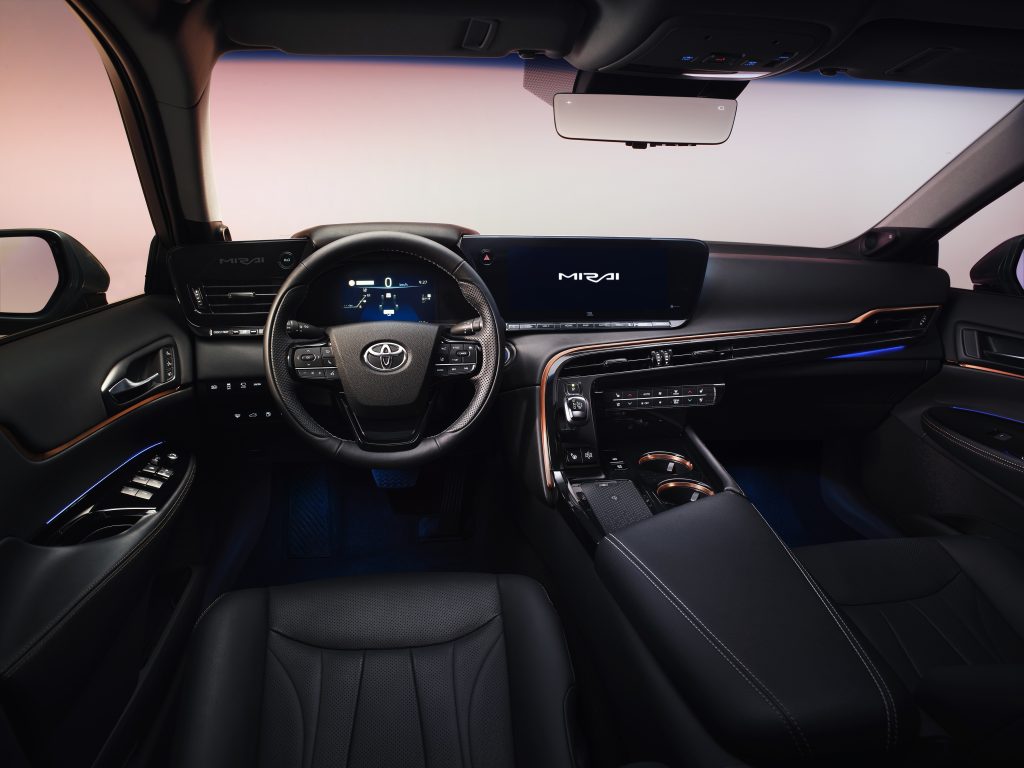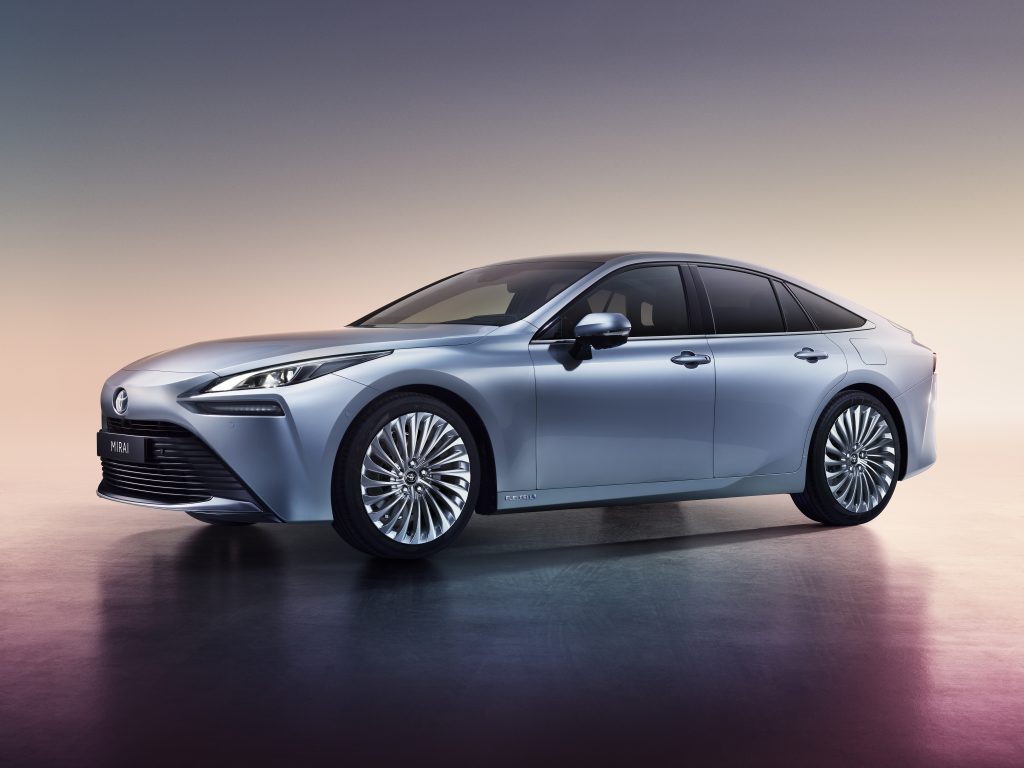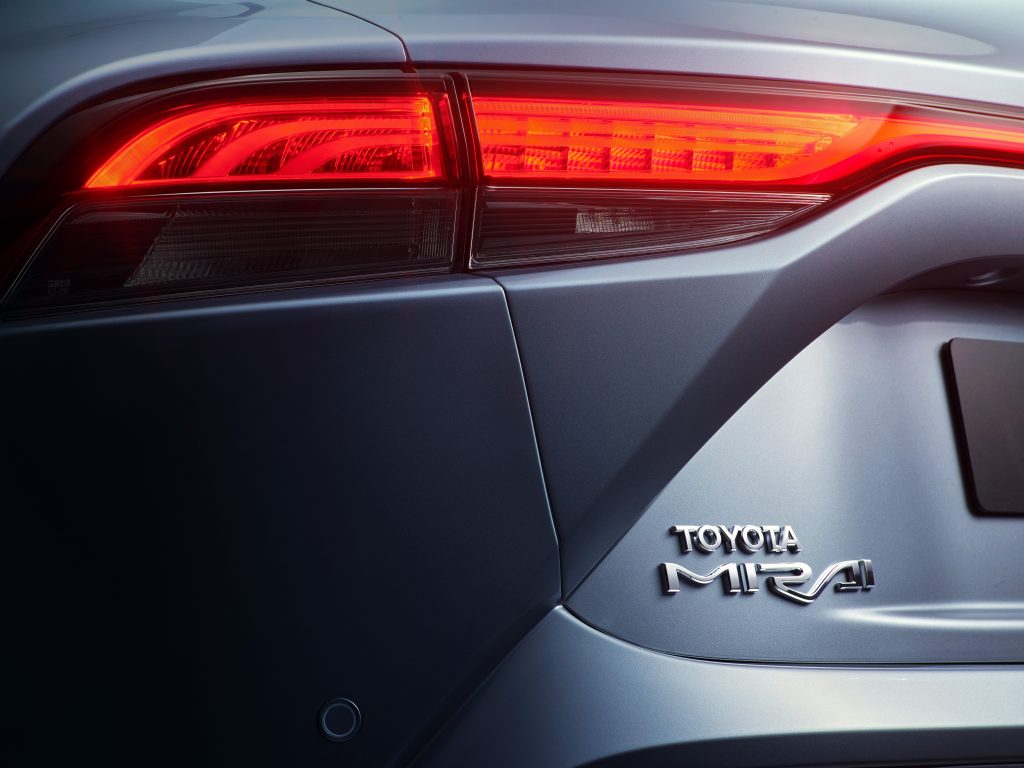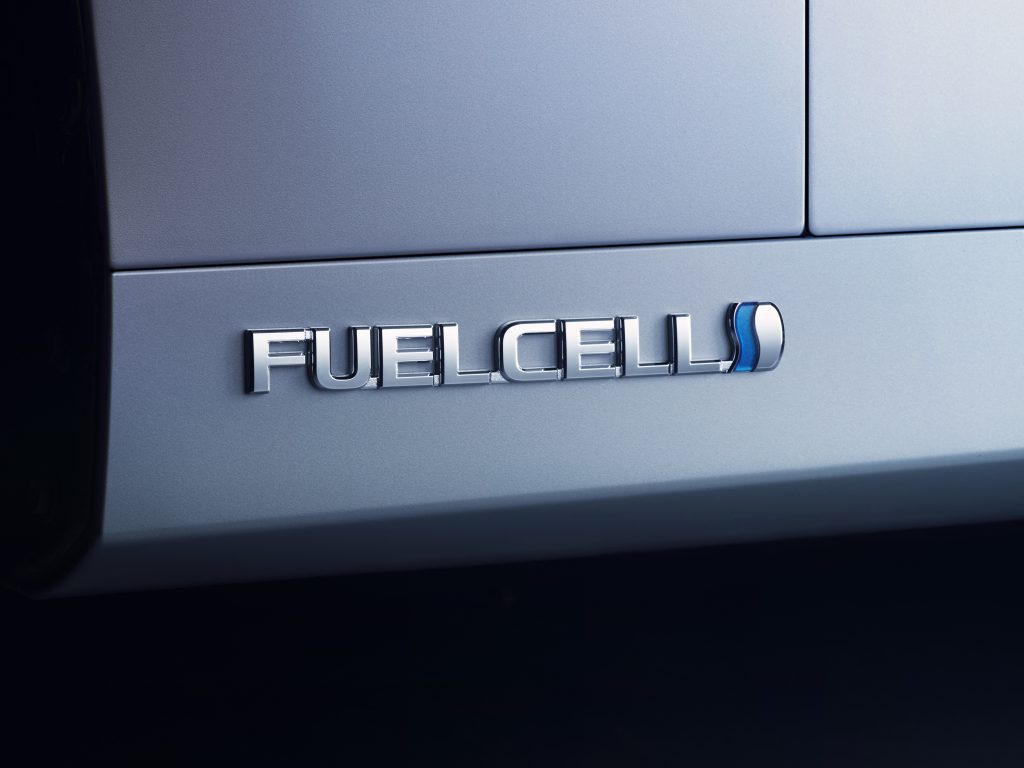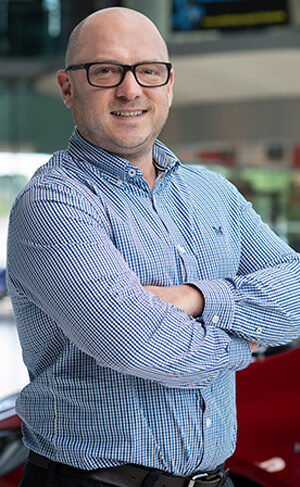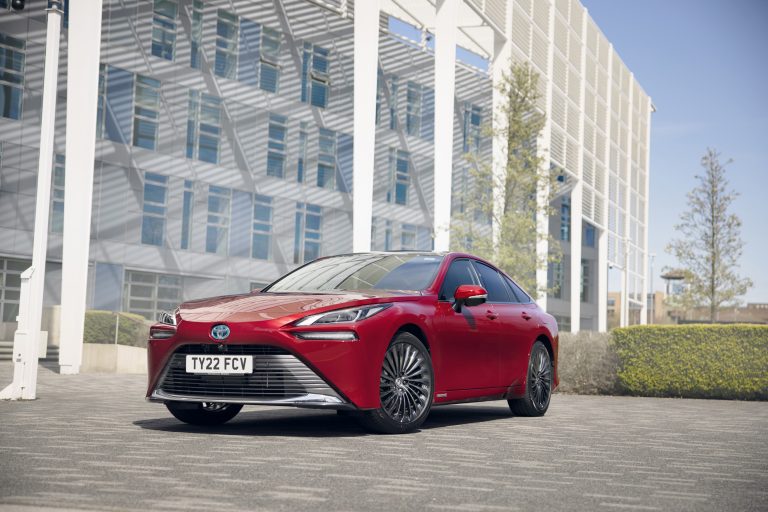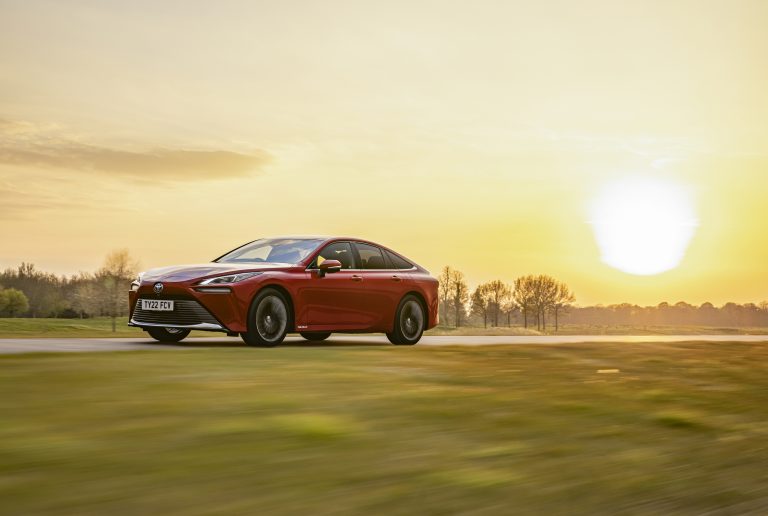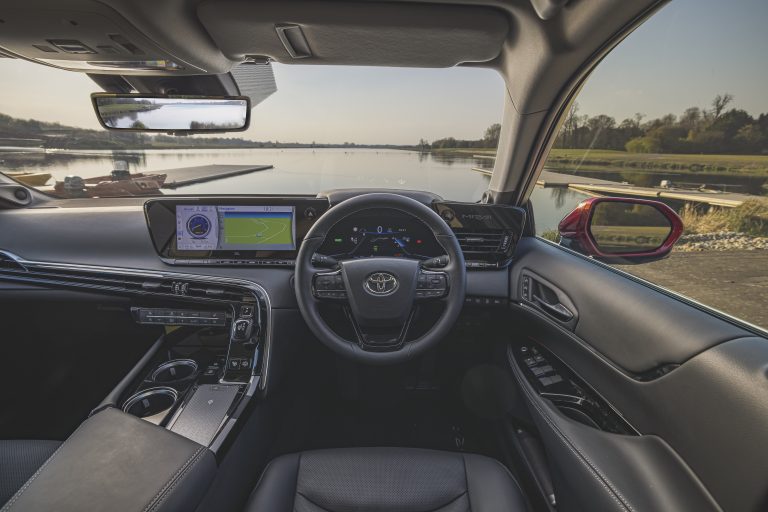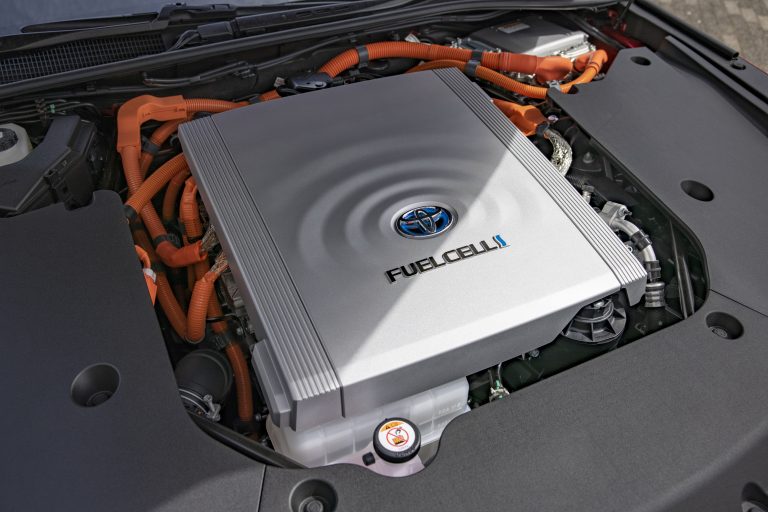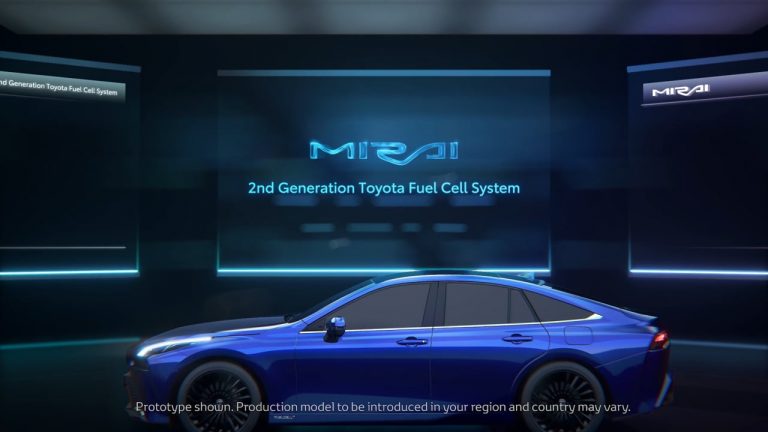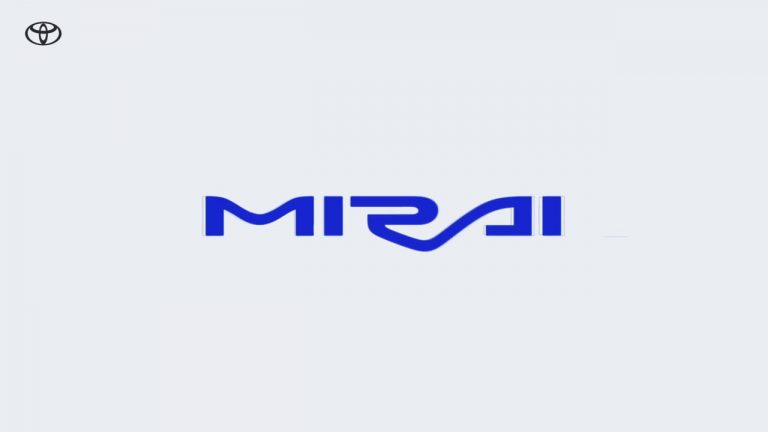Introducing the All-New Toyota Mirai
- Second generation of Toyota’s ground-breaking, zero emission hydrogen fuel cell electric saloon
- New Mirai built on Toyota’s modular GA-L platform, enabling improved system packaging and a more spacious, five-seat cabin
- New platform allows for an extra (third) hydrogen fuel tank to be added, contributing to a 30 per cent increase in the car’s driving range to around 400 miles
- Focus on building more emotional appeal through design and driving quality, in addition to the Mirai’s eco-performance
- Completely redesigned fuel cell system, with significant reductions in the size and weight of all principal components
- Installing a fully revised fuel cell electric powertrain on the GA-L vehicle platform achieves an ideal 50:50 chassis balance
- Toyota targets a 10-fold increase in global Mirai sales
Toyota’s vision for a future sustainable hydrogen society recognises the value of hydrogen as a viable and plentiful resource for carrying and storing energy. It has the potential to deliver zero carbon mobility, not just in road vehicles but equally in trains, ships and planes, and to generate power for industry, businesses and homes. It’s also an efficient means of storing renewable energy and can be transported to where it’s needed.
Toyota began development of a hydrogen fuel cell electric vehicle in 1992, successfully introducing the Mirai saloon to world markets in 2014. This breakthrough achievement was founded on the company’s world-leading experience in hybrid technology, the core technology for a wide range of different electrified vehicle powertrains.
The basic concept of hybrid power has successfully been adapted to produce Hybrid Electric (HEV), Plug-in Hybrid Electric (PHEV), Battery Electric (BEV) and – starting with the Mirai – Fuel Cell Electric Vehicles (FCEV). Each has qualities suited to different mobility requirements: for example, BEVs for shorter commutes and urban driving; HEVs and PHEVs for general and longer distance personal travel; and FCEVs for larger and heavier passenger cars, heavy-duty vehicles and public transport.
Now a new generation Mirai is being launched, a car that takes FCEV technology to a higher level and offers more emotional customer appeal in terms of dynamic, contemporary styling and more rewarding driving performance. A comprehensively redesigned fuel cell system, intelligent packaging and aerodynamic efficiency help extend the driving range to around 400 miles, with no other emissions than pure water.
Improvements in performance and design
In developing the new Mirai, Toyota was committed to delivering all-round improvements to increase customer appeal, from its performance capabilities to the way it looks and drives.
A priority has been to improve its driving range compared to the first generation model and going beyond the distances typically achieved by battery electric vehicles. Increased power and hydrogen fuel capacity, improved efficiency and better aerodynamics all contribute to extending the driving range by 30 per cent to around 400 miles. This gives the new Mirai a genuine long-distance driving capability.
Packaging has also been significantly improved with new Mirai built on Toyota’s modular GA-L platform. A more efficient and well-balanced arrangement of the new FCEV powertrain – notably with the fuel cell stack moved from beneath the cabin to the front compartment – has allowed for a more spacious, five-seat interior with improved legroom for rear seat passengers.
The new Mirai also displays more attractive vehicle proportions: overall height has been reduced by 65 mm to 1,470mm, and there is a 140mm increase in the wheelbase (2,920mm). With the rear overhang extended by 85 mm, overall vehicle length is now 4,975mm. A 75mm increase in the track width and the use of larger, 19 and 20-inch wheels add to the lower and more dynamic stance and visual sense of the new Mirai’s lower centre of gravity.
More emotional customer appeal
One of the principal aims for the new Mirai has been to give the car a stronger emotional appeal, making it a car that people will be attracted to by its looks and the way it drives, as well its eco-performance. The new GA-L platform and Toyota’s advances in FCEV technologies have made this possible.
GA-L platform
Adopting the GA-L platform has allowed the fuel cell stack and drivetrain components to be repackaged in a way that makes more efficient use of space. The result is a more spacious, five-seat cabin and a better chassis balance. Perhaps most significantly, it enables three high-pressure hydrogen tanks to be fitted, increasing fuel capacity and the car’s driving range – by 30 per cent.
The tanks are arranged in a “T” configuration, the longest running longitudinally and centrally beneath the vehicle floor, with two smaller tanks set laterally beneath the rear seats and luggage compartment. Together they can hold 5.6kg of hydrogen, compared to 4.6kg in the current Mirai’s two tanks. Their position contributes to the car’s lower centre of gravity and avoids compromising load space.
The new architecture also permits the all-new hydrogen fuel cell to be moved from its current location beneath the floor to the front compartment (equivalent to the engine bay), while the (more compact) high-voltage battery and electric motor are positioned above the rear axle. As explained below, powertrain layout has been optimised to give new Mirai a 50:50 front:rear weight distribution.
The tanks have a stronger, multi-layer construction and are highly weight-efficient – the hydrogen accounts for 6 per cent of the combined weight of the fuel and tanks.
New fuel cell stack
Toyota’s new fuel cell stack and fuel cell power converter (FCPC) have been developed specifically for use with the GA-L platform. The designers have been able to bring all the elements together in the stack frame (including the water pumps, intercooler, air conditioning and air compressors and the hydrogen recirculation pump) with each part made smaller and lighter, while at the same time improving performance. The stack case itself has been made smaller by using Friction Stir Welding, reducing the gap between the fuel cell and casing.
The fuel cell stack uses a solid polymer, as in the current Mirai, but has been made smaller and has fewer cells (330 instead of 370). Nonetheless, it sets a new record for specific power density at 5.4 kW/l (excluding end plates). Maximum power has thus risen from 114 kW to 128 kW. Cold weather performance has been improved with start-up now possible at temperatures from as low as -30˚C.
By concentrating the system connections within the case, fewer components are needed, again saving space and weight.
Focusing on innovation and improvement in every component has delivered a 50 per cent weight reduction yet a 12 per cent increase in power. New measures include relocation of the manifold, reducing the size and weight of the cell optimising the shape of the gas channel separator and using innovative materials in the electrodes.
The unit also incorporates the Fuel Cell DC-DC Converter (FDC) and modular high-voltage parts, while achieving a 21 per cent reduction in size compared to the current system. Weight has been cut by 2.9kg to 25.5kg. Advanced technology has contributed to the space-saving, with Toyota’s first-time use of a next generation silicon carbide semiconductor material in the intelligent power model (IPM) transistors. This enables an increase in output and lower power consumption while using fewer transistors, which in turn allows the FCPC to be made smaller.
The same size and weight-saving approach has been applied to other parts of the FC stack. The air intake is designed for low pressure loss and contains sound-absorbing material so that noise from the air inlets is unnoticeable in the cabin. The exhaust uses a resin pipe and is designed to allow for a large amount of air and water to be discharged; a larger-capacity silencer contributes to the quieter cabin. The complete air system is almost 30 per cent smaller than in the current Mirai and weighs more than a third (34.4 per cent) less.
Lithium-ion battery
The new Mirai is equipped with lithium-ion high-voltage battery in place of the current model’s nickel-metal hydride unit. Although smaller in size, it is more energy-dense, giving higher output and superior environmental performance. Containing 84 cells, it has a 310.8 rated voltage compared to 244.8, and a 4.0Ah capacity, versus 6.5Ah. Overall weight has been reduced from 46.9 to 44. kg. The output has improved from 25.5kW x 10 seconds to 31.5kW x 10 seconds.
The battery’s smaller dimensions have allowed it to be positioned behind the rear seats, avoiding intrusion in the load compartment. An optimised air-cooling path has been designed, with discreet inlets either side of the rear seats.
Dynamic performance
The adoption of the GA-L platform for the new Mirai gives the car fundamental benefits of a lower centre of gravity, improved inertia characteristics and significantly increased body rigidity, all of which help deliver superior dynamic performance.
With the fuel cell stack moved from beneath the vehicle floor to the front compartment and the battery and electric motor positioned at the rear, a 50:50 front:rear weight balance has been achieved, giving it the fundamental stability characteristics of a front-engine car.
The rigidity of the body has been increased with strategic bracing and reinforcements, the wider application of body adhesives and the use of laser screw welding.
The new platform also accommodates new multilink front and rear suspension, in place of the previous front MacPherson struts and rear torsion beam arrangement. This set-up provides a high level of stability, controllability and ride comfort. Details include the use of thicker anti-roll bars, optimal upper and lower ball joint location and overall high suspension rigidity, yielding rewards in terms of responsiveness and stability.
Further benefits are gained from new Mirai’s use of larger wheels and tyres. The 19 and 20-inch wheels are fitted with 235/55 R19 and 245/45 R20 tyres respectively, with low rolling resistance and quiet running, contributing to fuel efficiency, handling quality, stability and a quiet cabin environment. Using larger diameter wheels and tyres helps secure the space required for the new triple hydrogen fuel tanks.
The car’s improved aerodynamics, with a lower roof line, full under cover and lower drag coefficient figure, plays its part too in raising the quality of handling and stability, and achieving the longer cruising range.
New Mirai also delivers rewards from its improved driving character. The extra power produced by the new fuel cell stack and battery are harnessed for smooth, linear take-off, with acceleration harmonised with the driver’s use of the throttle. Highway driving is relaxed and stress-free, with excellent response available at all speeds. When driving on winding, open roads, new Mirai’s poise is combined with good acceleration out of bends.
Cleaning the air as you drive
The environmental benefit of driving the Toyota Mirai go beyond zero emissions to “negative emissions” – the car effectively cleans the air as it moves.
A Toyota innovation, a catalyst-type filter is incorporated in the air intake. As air is drawn into the vehicle to supply the fuel cell, an electric charge on the non-woven fabric filter element captures microscopic particles of pollutants, including sulphur dioxide (SO2), nitrous oxides (NOx) and PM 2.5 particulates. The system is effective in removing 90 to 100 per cent of particles between 0 and 2.5 microns in diameter from the air as it passes into the fuel cell system.
Targeting a 10-fold increase in sales
The introduction of the new Mirai will see Toyota target deeper market penetration with a 10-fold expansion in sales volume. This growth will be supported by the new model’s stronger performance and greater customer appeal, notably as a more affordable vehicle with a selling price reduced by around 20 per cent.
The practicality of hydrogen FCEV ownership will also steadily increase as markets improve their hydrogen infrastructure, the number of filling stations rises and Governments and local authorities introduce new incentives and regulations for cleaner mobility.
ENDS
Ref: 201130M

